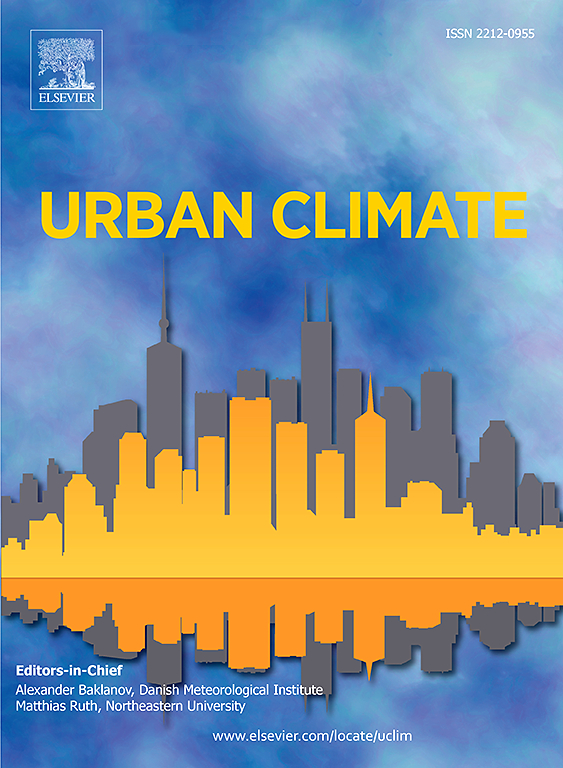城市化对东南推进的华南天气切变线驱动的季风前降水的影响
IF 6.9
2区 工程技术
Q1 ENVIRONMENTAL SCIENCES
引用次数: 0
摘要
利用多波段观测资料,对南海季风爆发前发生在低水平东南移动切变线的12次珠江三角洲降水事件进行了识别和分析。在WRF模式下,利用允许对流的集合模拟研究了珠三角城市群对降水的影响。这些模拟结合了12次事件的天气背景平均值,并比较了有珠江三角洲城市和没有珠江三角洲城市的情景。结果表明,这些事件的特征是对流层中盛行的西风气流和切变线以南的低空西南气流,将高等效位温的空气输送到珠江三角洲。局地太阳时(LST) 0600至0000 LST (+1d)的累积降水主要位于城市群北部及其东北边界附近。模拟结果表明,特大城市热岛的存在显著增强了东北城市边界下游对流的形成和降水。这种由超高热引起的局部对流,加上城市动力效应,通过阻碍低空西南气流和耗尽水分资源,阻碍了温暖潮湿空气进一步向内陆输送。因此,城市群北部切变线相关降水减少。本文章由计算机程序翻译,如有差异,请以英文原文为准。
Influence of urbanization on pre-monsoon precipitation driven by southeastward-advancing synoptic shear line over South China
Twelve precipitation events over the Pearl River Delta (PRD) in South China, occurring with low-level southeastward-moving shear lines prior to the monsoon onset over the South China Sea, were identified and analyzed using multiple observations. The impacts of the PRD urban agglomeration on precipitation were investigated using convection-permitting ensemble simulations with the WRF model. These simulations incorporated the synoptic background averaged over the twelve events and compared scenarios with and without the cities in the PRD. Results reveal that these events are characterized by prevailing westerly flows in the mid-troposphere and low-level southwesterly flows south of the shear lines, which transport air with high equivalent potential temperature to the PRD. Accumulated precipitation from 0600 local solar time (LST) to 0000 LST (+1d) is predominantly located to the north of the city cluster and near its northeastern border. Simulations indicate that the existence of urban heat islands (UHI) in megacities significantly enhances downstream convection initiation and precipitation along the northeastern urban boundaries. This UHI-induced local convection, combined with urban dynamic effects, hinders further inland transport of warm, moist air by impeding low-level southwesterly flows and depleting moisture resources. Consequently, the shear line-associated precipitation north of the urban cluster is reduced.
求助全文
通过发布文献求助,成功后即可免费获取论文全文。
去求助
来源期刊

Urban Climate
Social Sciences-Urban Studies
CiteScore
9.70
自引率
9.40%
发文量
286
期刊介绍:
Urban Climate serves the scientific and decision making communities with the publication of research on theory, science and applications relevant to understanding urban climatic conditions and change in relation to their geography and to demographic, socioeconomic, institutional, technological and environmental dynamics and global change. Targeted towards both disciplinary and interdisciplinary audiences, this journal publishes original research papers, comprehensive review articles, book reviews, and short communications on topics including, but not limited to, the following:
Urban meteorology and climate[...]
Urban environmental pollution[...]
Adaptation to global change[...]
Urban economic and social issues[...]
Research Approaches[...]
 求助内容:
求助内容: 应助结果提醒方式:
应助结果提醒方式:


